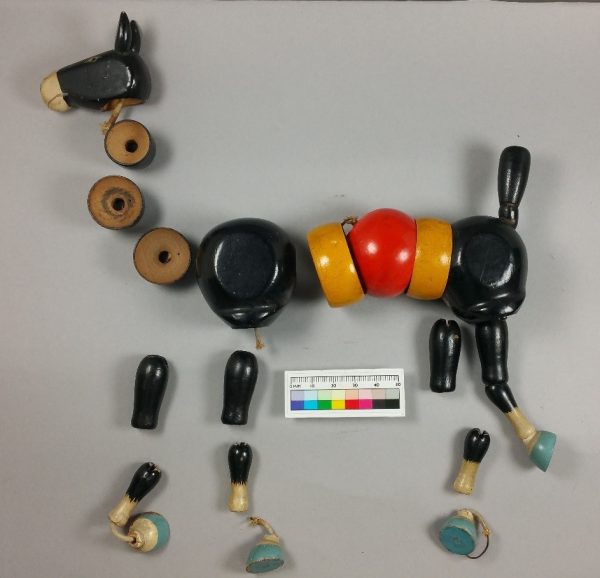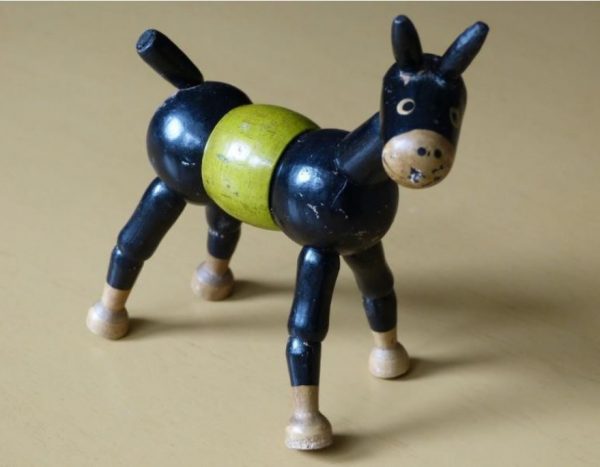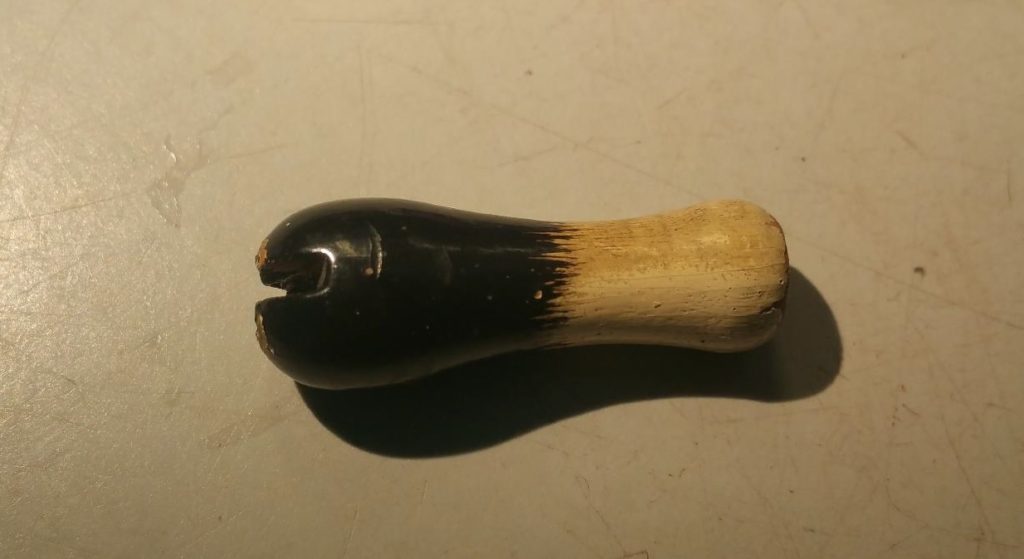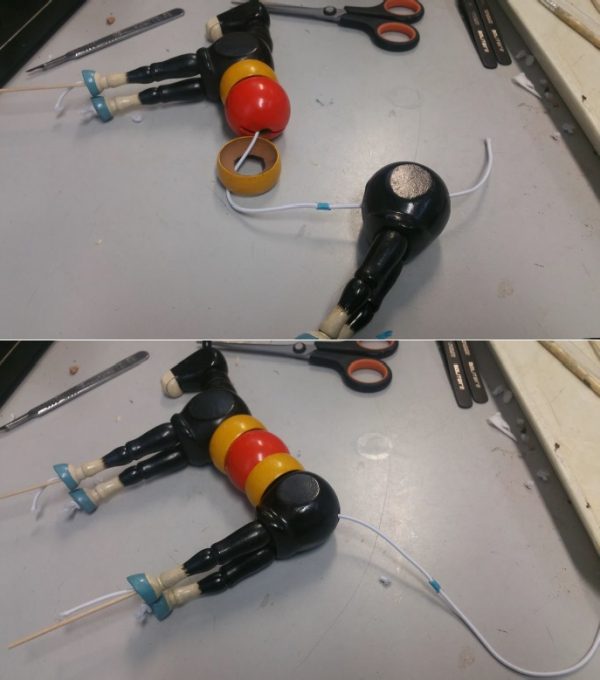April ’19
Wooden Toy Horse
April’s ‘Object of the Month’ is a wooden toy horse from Beamish Museum, which is composed of twenty-one separate components held together using elastic.

The precise origin of the object has yet to be identified. Through research in the Beamish Museum archives, no example of a similar toy could be found in catalogues ranging from the 1900s to the 1980s. Other horse toys that were found were usually highly detailed and rigid, typically made of metal or rubber. Similar horse puppets have jointed limbs and bodies, however they are marionette puppets and rely on strings to be operated.
Instructions on how to make a jointed horse puppet from cotton spools was found in Catford’s Making Nursery Toys, suggesting that the object might be of homemade manufacture, although the complexity and quality of the object would suggest a high level of craftsmanship.

Other jointed horse toys have been dated to the 1920s, such as the Humpty Dumpty Circus series of toys that was produced by the Schoenhut’s Toy Company from 1903 to 1935 and included 37 different animals including horses and mules.
From the evidence of similar objects from museum and private collections, it can be posited that the toy originates from the 20th century. This is likely due to the use of elastic in creating a posable toy, a practice not seen in 19th century examples, and uses paint pigments with heavy metal compounds (see section three) that is not seen past the 1990s. This seems to reduce the date of possible manufacture to 1900-1992.
As the horse toy was intended to be part of the handling collection at Beamish Museum, there was a strong desire to have the toy conserved and restored.
Conservation

The horse toy was first fully dismantled before any surface cleaning took place, as this would mean that all areas of the individual pieces could be properly cleaned and conserved. The elastic was held in place using wooden pegs, which were removed using physical force before the elastic was removed.
The pieces were then dry cleaned using an appropriate dry cleaning method, which removed dirt but did not damage the surface pigment. Dry cleaning methods were preferred over wet cleaning as it was suspected that the pigments would be soluble in various solvents. Although dry cleaning methods removed the majority of the surface dirt, it was decided that wet cleaning would be required to remove the more ingrained areas of dirt. After testing a number of solvents on inconspicuous areas, an appropriate solvent solution was applied using cotton wool swabs, which removed the final areas of dirt.

Once the surface had been cleaned the decision was made to consolidate the surface. As the object was going to be part of the handling collection at Beamish Museum, applying a layer of consolidant to the painted surface was deemed appropriate in order to help protect the object during frequent handling. A suitable water based consolidant was chosen to apply to the surface as this did not damage the surface of the object and could be removed safely if necessary in the future.
It was evident on first recording the object that there were areas of paint loss on the surface, and due to the future role of the object it was thought that infilling these areas would be appropriate. Acrylic paints were colour matched to the original colours and applied carefully using a small brush. The results were examined under both lamp and natural light in order to gain a satisfactory result; gap fills were clearly evident on closer inspection whilst being indistinguishable from the original surface at distant and cursory glances. This will provided the viewer with an unencumbered impression of the toy, ‘as new’ or rather in a condition more akin to how the toy appeared during its earliest phase of use and play.

Once gap filling and colour matching had occurred, the toy was restrung using new 2mm diameter elastic. The tension was calibrated using knots and pegs to adjust the length of the elastic inside the toy. Whilst it is not possible to know how taught the elastic was in the original toy, a compromise between how poseable the object could be and load bearing was made to allow the toy to stand whilst not making the joints too stiff to operate as to cause abrasion. Although there is evidence of paint loss through abrasion around jointed areas, as little friction as possible was desired to prevent further damage.
Stay tuned for next month’s object!
